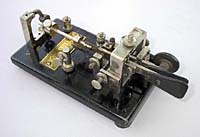References to Jim Farrior's (W4FOK) telegraph learning program The Mill appear on many CW websites. Jim's operational notes include plans for a keying circuit via a COM port (while running DOS, not Windows). I built one for my buggy buddy Floyd, N5EL, into a Radio Shack box about half this size. However, I had purchased this larger box and never used it, so I decided to add a battery inside for powering the sounder. Then I realized that made it hard to key the sounder with my bug, so I made a slight modification to the circuit to allow that as well. Now I can listen to the sound of a letter, number, or punctuation on The Mill, then try to duplicate the sound with my bug. (Click each thumbnail below to enlarge.)
All parts were taken from my junk supply or purchased from Radio Shack.
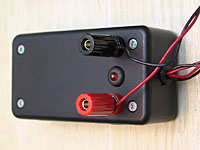
One terminal strip and the transistor are mounted over the black and red test terminals. These make a convenient attachment point for the sounder wires. A second terminal strip is soldered to the mounting lug of the first terminal strip. This produces an "L" shaped combination of the two.
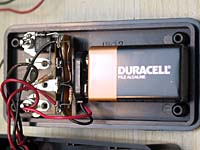
The sounder attaches to the test terminals on the top. The key connects via a phono plug to a phone jack. The DB-9 attaches to one COM port on the computer.
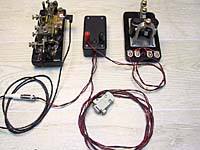
Here the entire setup is in working position ready to teach me, I hope, the American Morse alphabet. I learned International Morse twice: first I learned the dot and dash combination for each letter. Much later I learned the sound of the letter, and only then did CW become enjoyable and useful. I hope to avoid that mistake this time around. Thanks Jim!
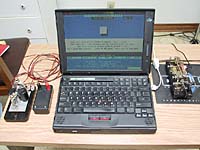
BTW, close-up of my own favorite key: 1924 Blue Racer
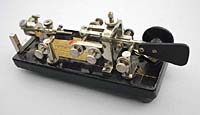
Neatest key I have ever used: KQ5K's Double Lever - very smooth and unique feel
